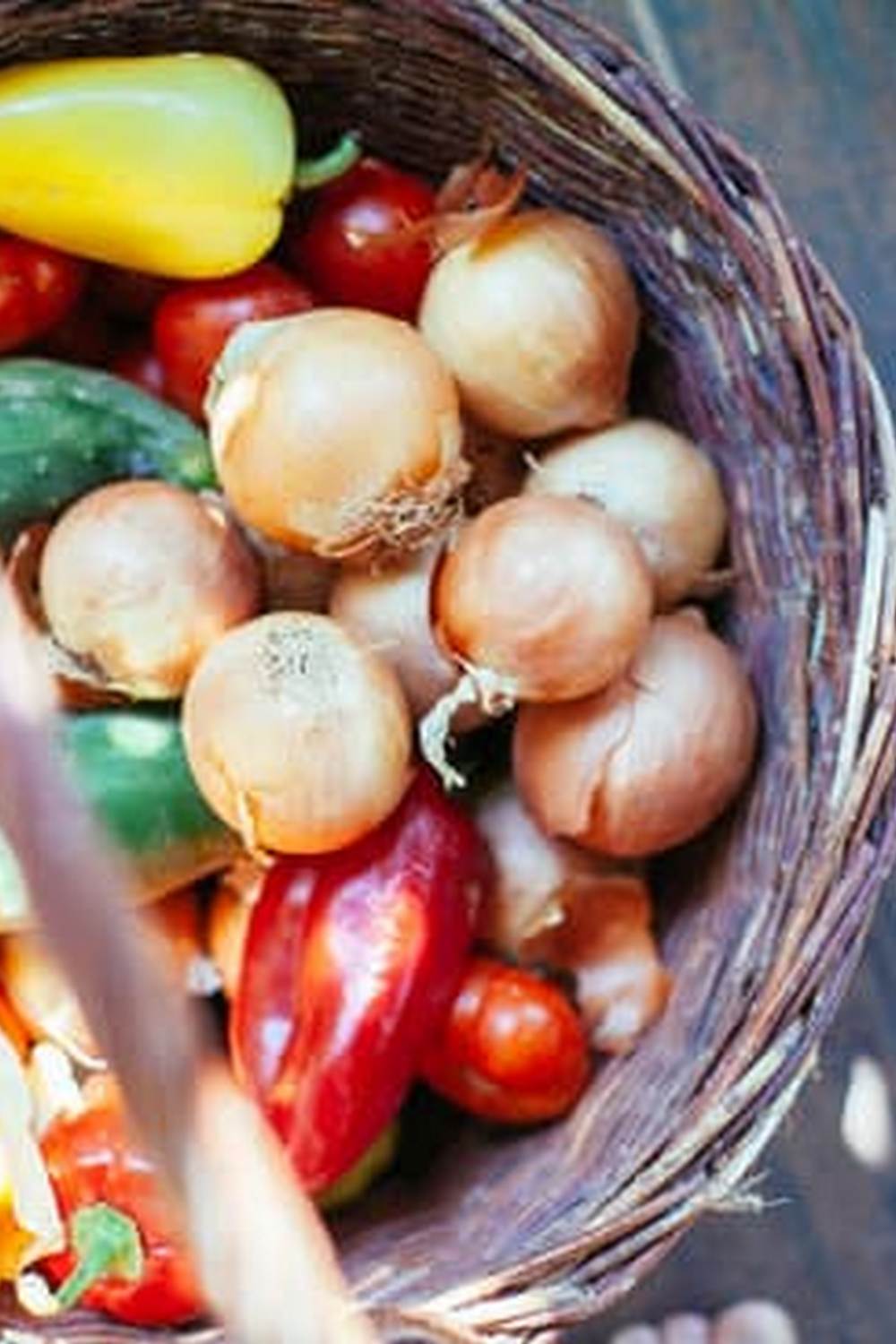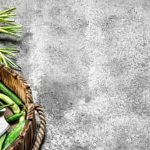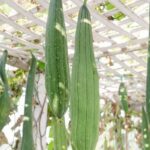French Intensive Vegetable Gardening has been a time-honored method of cultivating and maximizing the yield of vegetables in a small space. Its origins can be traced back to 19th-century France, where Parisian market gardeners developed this technique to produce high quality and quantity crops. This method focuses on achieving maximum output from minimal input, making it an efficient and sustainable approach to gardening.
The Basics of French Intensive Vegetable Gardening involve close plant spacing, soil improvement through intensive cultivation, using organic methods for pest control, and composting. The primary goal is to create a self-sustaining garden ecosystem that produces high yields while minimizing resource use.
When Choosing the Right Location for Your French Intensive Vegetable Garden, it is essential to consider factors such as sunlight exposure, drainage, and proximity to water sources. These elements will ensure the health and productivity of your garden. Additionally, ensuring proper air circulation is crucial for preventing diseases and promoting overall plant growth.
The Basics of French Intensive Vegetable Gardening
French intensive vegetable gardening, also known as French biodynamic gardening, is a method of growing crops in small, meticulously cultivated beds. This method dates back to the 19th century and was popularized by horticulturist Alan Chadwick. The goal of French intensive vegetable gardening is to maximize the productivity of a small space while using organic and sustainable practices.
The basics of French intensive vegetable gardening involve creating raised bed systems that are typically 5 feet wide with paths between each bed for easy access. These beds are then double-dug to loosen the soil and improve drainage. Additionally, compost and organic matter are added to enrich the soil and provide essential nutrients for plant growth. The plants are densely planted in these beds to maximize space utilization and reduce water loss through evaporation.
To get started with French intensive vegetable gardening, it’s important to focus on soil health and fertility. Maintaining a healthy balance of nutrients, organic matter, and microorganisms is critical for successful harvests. Proper crop rotation and succession planting should also be implemented to optimize yields throughout the growing season.
Some key elements of the basics of French intensive vegetable gardening include:
- Double-digging the beds
- Adding compost and organic matter
- Densely planting crops
- Focusing on soil health
- Implementing crop rotation and succession planting
By following these fundamental principles, gardeners can create a thriving and productive French intensive vegetable garden.
Choosing the Right Location for Your French Intensive Vegetable Garden
Soil Quality
Before you start planting, it’s important to assess the soil quality in your chosen location. French intensive vegetable gardening relies on high-quality soil that is rich in organic matter and nutrients. Conduct a soil test to determine the pH level and nutrient content of the soil, and amend it as necessary with compost, peat moss, or other organic materials to create an optimal growing environment for your vegetables.
Access to Water
Another important factor to consider when choosing a location for your French Intensive Vegetable Garden is access to water. You will need to water your garden regularly, especially during dry periods, so it’s important that your chosen location is within reach of a water source such as a hose or irrigation system. Consider how easily you can access and distribute water throughout the garden when selecting the perfect spot for your vegetables.
Protection From Elements
Finally, consider any natural elements that may affect your garden, such as wind exposure or nearby trees that could cast too much shade over the area. While some wind can be beneficial for pollination and pest prevention, excessive wind can damage young plants.
Similarly, if there are large trees nearby that could overshadow your garden with too much shade, this could impact the growth of your vegetables. It’s important to choose a location that strikes a balance between protection from harsh elements and access to necessary natural elements for healthy plant growth.
Selecting the Best Crops for French Intensive Vegetable Gardening
When it comes to French Intensive Vegetable Gardening, the selection of crops is crucial for a successful and bountiful garden. The goal of this gardening method is to maximize yield in a small space, which means choosing crops that are high-yielding and compatible with the intensive planting techniques. Some of the best crops for French Intensive Vegetable Gardening include lettuce, spinach, carrots, radishes, tomatoes, peppers, and beans.
Lettuce and spinach are excellent choices for French Intensive Vegetable Gardening because they can be planted closely together and harvested as baby greens or mature heads. Carrots and radishes are root vegetables that thrive in this method due to their ability to grow vertically without competing for space. Tomatoes and peppers can also be successfully grown using French Intensive Vegetable Gardening techniques by providing sturdy support structures and proper spacing.
Beans are another great option for this gardening method as they can be grown upwards on trellises or stakes, making efficient use of vertical space. When selecting crops for your French Intensive Vegetable Garden, it is important to consider their compatibility with each other in terms of nutrient needs, water requirements, and growth habits. By choosing the right combination of crops, you can create a harmonious and productive garden that maximizes space and yield.
In addition to the aforementioned crops, herbs such as basil, cilantro, and parsley are also well-suited for French Intensive Vegetable Gardening due to their compact growth habits and culinary value. By carefully selecting the best crops for your garden, you can enjoy a diverse harvest throughout the growing season while making the most of your limited space.
Planning and Designing Your French Intensive Vegetable Garden
Planning and designing a French intensive vegetable garden requires careful consideration of several key factors to ensure a successful and productive harvest. This method of gardening focuses on maximizing the use of space while maintaining soil fertility, which can lead to high yields in a small area.
Layout and Spacing
When planning your French intensive vegetable garden, it is important to consider the layout and spacing of your crops. This method typically involves planting in raised beds or closely spaced rows, allowing for efficient use of space while still providing adequate room for plants to grow. Careful consideration should be given to the mature size of each crop when determining spacing to ensure proper air circulation and sunlight exposure.
Companion Planting
In French intensive vegetable gardening, companion planting is an important aspect of planning and designing your garden. By strategically planting certain crops together, you can encourage beneficial interactions between plants, such as pest control or improved soil fertility. Consider incorporating companion plants, such as marigolds or basil, throughout your garden to create a balanced ecosystem that supports healthy growth.
Succession Planting
Another important element to consider when planning and designing your French intensive vegetable garden is succession planting. This technique involves planting new crops as soon as one crop is harvested, ensuring that space in the garden is continuously utilized throughout the growing season. By carefully timing plantings, you can maximize the yield from your garden and extend the harvest for many crops.
By carefully considering layout and spacing, incorporating companion planting, and implementing succession planting techniques, you can effectively plan and design a French intensive vegetable garden that will provide bountiful harvests throughout the growing season.
Implementing Companion Planting in French Intensive Vegetable Gardening
Companion planting is a key aspect of French intensive vegetable gardening, which involves planting different crops close together to maximize space, deter pests, and promote growth. By strategically pairing certain plants together, gardeners can create a balanced ecosystem that benefits the overall health and yield of the garden.
When implementing companion planting in French intensive vegetable gardening, it’s important to consider which plants work well together and which ones may hinder each other’s growth. Some popular companion plant combinations include tomatoes and basil, carrots and onions, and corn and beans. These pairings not only complement each other in terms of nutrients and space utilization but also help repel pests that may be detrimental to one another.
In addition to choosing the right plant combinations, spacing is crucial in companion planting. Different plants have varying root depths and foliage spreads, so it’s essential to plan the layout of the garden carefully. Utilizing raised beds or planting in hexagonal patterns can help optimize space while ensuring that each plant has enough room to thrive.
When designing your French intensive vegetable garden with companion planting in mind, consider creating a visual layout or map to ensure that the pairings are strategically placed throughout the garden. This will not only contribute to the overall aesthetic appeal but also facilitate efficient maintenance and care throughout the growing season.
- Strategically pairing certain plants together
- Consider which plants work well together
- Utilizing raised beds or planting in hexagonal patterns for spacing optimization
- Creating a visual layout or map for strategic placement of pairings
Maintaining and Caring for Your French Intensive Vegetable Garden
Once your French Intensive Vegetable Garden is established, it is important to maintain and care for it properly in order to ensure a bountiful harvest. Regular watering, weeding, and fertilizing are essential tasks that should be carried out consistently. Watering can be done using a drip irrigation system or soaker hoses to ensure that the plants receive adequate moisture without wasting water.
Weeding is crucial in French Intensive Vegetable Gardening as weeds can compete with your crops for nutrients and water. Organic mulch can also be used to suppress weed growth.
In addition to regular maintenance, it is important to monitor your garden for signs of pests and diseases. Implementing organic pest control methods such as introducing beneficial insects, using neem oil, or installing row covers can help protect your crops from harmful pests. It is also recommended to practice crop rotation to prevent the build-up of pests and diseases in the soil.
One key aspect of caring for a French Intensive Vegetable Garden is maintaining healthy soil. This can be achieved by adding compost, organic matter, and natural fertilizers to enrich the soil with essential nutrients. Avoiding chemical pesticides and fertilizers is an important principle of this gardening method in order to create a sustainable and environmentally-friendly garden.
| Task | Recommendation |
|---|---|
| Watering | Use drip irrigation or soaker hoses |
| Weeding | Regularly remove weeds; consider using organic mulch |
| Pest Control | Implement organic pest control methods; practice crop rotation |
| Soil Maintenance | Add compost, organic matter, and natural fertilizers; avoid chemical pesticides and fertilizers |
Maximizing Yield and Harvest in French Intensive Vegetable Gardening
French intensive vegetable gardening is a method that focuses on maximizing the yield of crops in a small area by using intercropping, companion planting, and careful soil management. By employing these techniques, gardeners can ensure a bountiful harvest from their vegetable garden.
One way to maximize yield in French intensive vegetable gardening is to practice succession planting. This involves planting new crops as soon as one crop is harvested, which allows for continuous production throughout the growing season. Additionally, using trellises and vertical gardening techniques can help save space and increase the yield of vining crops such as tomatoes, cucumbers, and peas.
In addition to succession planting and vertical gardening, proper spacing of plants is crucial for maximizing yield in French intensive vegetable gardening. Closer spacing promotes competition among plants for light, water, and nutrients, which can lead to higher yields.
However, it’s important to find the right balance as overcrowding can also result in stunted growth or increased susceptibility to pests and diseases. Regular irrigation, mulching, and timely harvesting are also essential for maintaining high yields in a French intensive vegetable garden.
| Technique | Benefit |
|---|---|
| Succession Planting | Continuous production throughout the growing season |
| Vertical Gardening | Saving space and increasing yield of vining crops |
| Proper Spacing | Promoting competition among plants for light, water, and nutrients resulting in higher yields |
Troubleshooting Common Issues in French Intensive Vegetable Gardening
In conclusion, French Intensive Vegetable Gardening is a time-tested method that has been used for centuries to maximize the yield and productivity of small garden spaces. By focusing on soil improvement, close plant spacing, and companion planting, this method allows gardeners to grow a wide variety of crops in a sustainable and efficient manner.
However, even with its many benefits, French Intensive Vegetable Gardening is not without its challenges. Common issues such as pest infestations, soil depletion, and over-crowding can arise and impact the success of the garden. It is important for gardeners to be proactive in identifying and addressing these issues to ensure the long-term health and productivity of their garden.
With proper planning, regular maintenance, and a thorough understanding of the principles of French Intensive Vegetable Gardening, it is possible to overcome these common issues and achieve a bountiful harvest. By staying informed about best practices and seeking guidance from experienced gardeners or resources, anyone can enjoy the rewards of a thriving French Intensive Vegetable Garden. With dedication and perseverance, even novice gardeners can successfully navigate the challenges that may arise in this efficient gardening method.
Frequently Asked Questions
What Is the French Intensive Method of Gardening?
The French Intensive Method of Gardening is a system that involves growing a large amount of vegetables in a small space, using high soil fertility and careful plant spacing. This method aims to maximize productivity and minimize wasted space.
What Is the French-Style of Vegetable Gardening?
The French-style of vegetable gardening involves planting vegetables in closely spaced raised beds, often in geometric patterns. This allows for easy access to the plants, efficient use of space, and high crop yields. It is known for its intensive cultivation methods.
What Is the French Gardening Technique?
The French gardening technique focuses on creating visually appealing and productive gardens by combining flowers, fruits, and vegetables. It often incorporates careful planning and design to achieve balance and harmony in the garden. This technique values both aesthetics and functionality in garden spaces.

If you’re looking to get into vegetable gardening, or are just looking for some tips on how to make your current garden better, then you’ve come to the right place! My name is Ethel and I have been gardening for years. In this blog, I’m going to share with you some of my best tips on how to create a successful vegetable garden.





